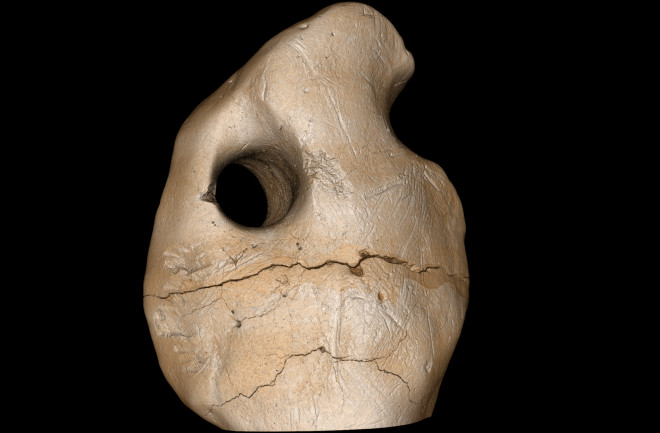Humans occupied South America much earlier than previously thought, according to a recent archaeological study. The discovery was made by analyzing three necklaces made from the bones of ground sloths. This finding adds to the ongoing debate regarding the timeline and methods of how Homo sapiens first reached the Americas, a relatively remote region compared to Africa, Europe, and Asia where human evolution and migration originated.
Traditionally, it is believed that humans crossed from Asia to modern-day Alaska around 15,000 years ago and then gradually settled in North and South America over the course of a thousand years, long after the Last Ice Age. However, recent unconventional discoveries have emerged that challenge this timeline, such as the finding of fossilized human footprints in New Mexico dating between 21,000 and 23,000 years ago, and the excavation of stone tools in northern Mexico believed to be around 33,000 years old. This new pendant study adds to the growing body of evidence challenging the conventional view.
The bone pendants used in the study were found in a well-explored site called Santa Elina rock shelter in Western Brazil. This site had previously yielded the skeletons of two extinct giant ground sloths. The pendants were not made from the skeletal remains of the massive creatures, but rather from the osteoderms embedded in their hide. These osteoderms, similar to armadillo armor, were painstakingly drilled through with stone tools to create holes for cords, much like the bone jewelry created by Ice Age cultures in Europe.
Using multiple dating techniques, the researchers determined that the layer containing the bone pendants dated back approximately 27,000 years ago, which coincides with the time of the Last Glacial Maximum. This phase of the Ice Age was characterized by peak glacial activity and significantly lower ocean levels, approximately 400 feet lower than the present day.
The worn condition of the pendants suggests that they held great value and were regularly utilized by the people living in Santa Elina. Two of the pendants were broken and likely discarded, while the fate of the third pendant remains unknown. The paper theorizes that the bone producers may have lived in the shelter, but it is also possible that they were transient travelers. Regardless, the discovery of osteoderms arranged in patterns resembling piles indicates that some ancient group had left behind these artifacts at the site. Stone tools were also found in close proximity to the ground sloth skeletons, but the degraded state of the bones prevented the researchers from examining them for potential butchery marks, a common sign of human presence.
Overall, this study provides further evidence that humans inhabited South America much earlier than previously believed, highlighting the complexity and richness of human migration and settlement patterns during the Last Ice Age. By analyzing bone pendants and their context, researchers are able to unravel the stories of ancient cultures and shed light on their interactions with their environment.
